Technologies
Is the iPhone 15 Pro Worth the Upgrade? How It Compares to Older iPhones
If you have a phone that’s at least 3 years old, such as the iPhone 12 Pro or earlier, the answer is likely yes.

With every new iPhone, especially the Pro models, Apple promises faster performance and better cameras. And according to my colleague Patrick Holland, who reviewed the iPhone 15 Pro and Pro Max, Apple delivers on those pledges.
But that doesn’t necessarily mean it’s worth upgrading to the latest models. Those improvements don’t come cheap, with the iPhone 15 Pro starting at $1,000 and the iPhone 15 Pro Max beginning at $1,199. Those prices become easier to swallow with carrier trade-in deals, but such discounts often require you to meet very specific circumstances, such as opening a new line or exchanging a relatively new phone.
Similar to the regular iPhone 15, the Pro model is best suited for those coming from an older model, like the iPhone 12 or earlier. There’s plenty that’s new with the iPhone 15 Pro, like the titanium body and new Action button, that make the phone feel fresh and different compared to the iPhone 14 Pro. But if you’re coming from a device that’s several years old, you’ll likely find the longer battery life and performance improvements to be the driving factors behind your decision to upgrade.
Take a look at the comparisons below to decide whether it’s the right time to upgrade to the iPhone 15 Pro. If you’re considering the standard iPhone 15 instead, check out our separate upgrade guide.
iPhone 15 Pro vs. iPhone 14 Pro
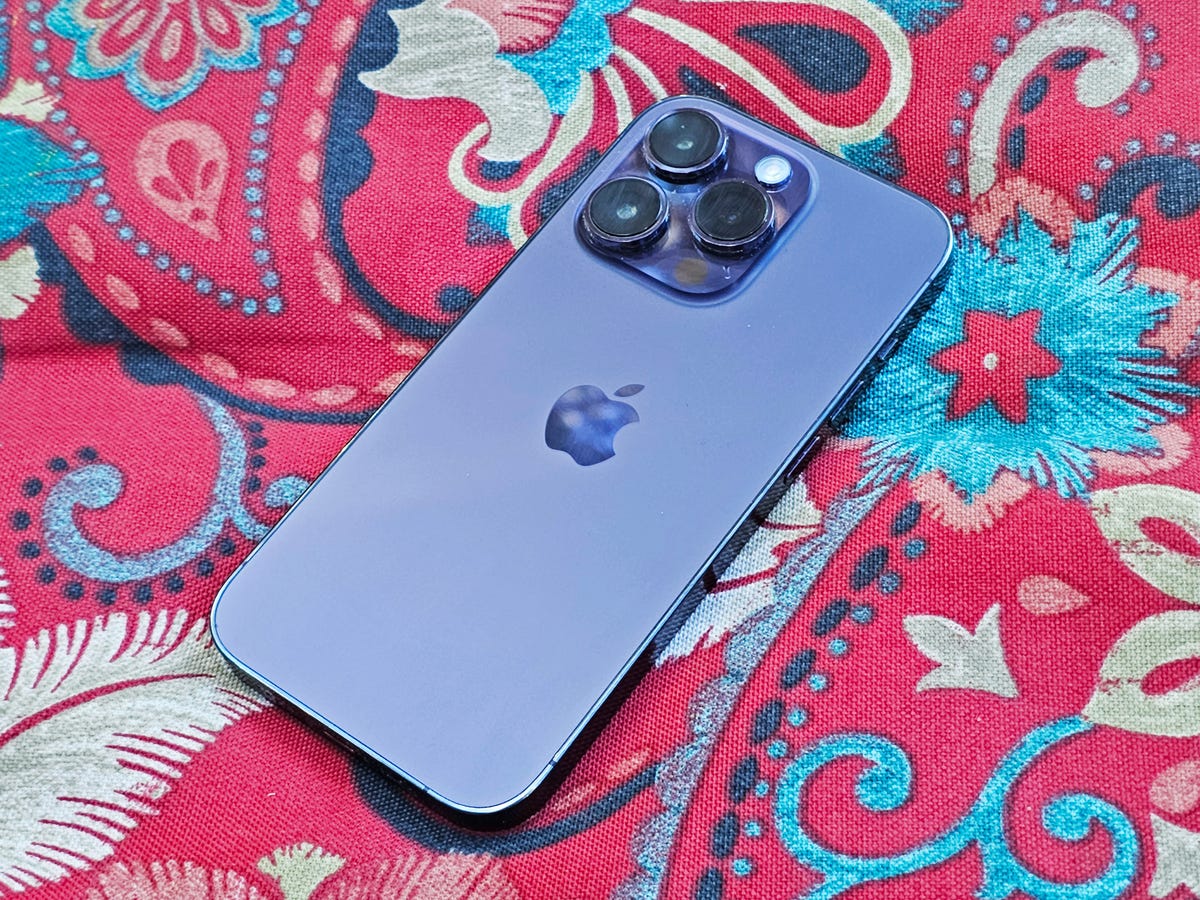
The iPhone 15 Pro brings numerous improvements compared to the iPhone 14 Pro, including a lighter titanium build, the Action button for programming shortcuts, a USB-C port for universal charging and a camera that can capture photos at 24 megapixels by default. Apple also claims the new A17 Pro processor can run console-grade games.
As is the case with previous Pro models, the iPhone 15 Pro also includes some extras for mobile photographers and filmmakers. Videographers, for example, may appreciate the option to shoot in the log video format, which makes it easier to match footage from other devices for projects shot on more than one camera. The iPhone 15 Pro Max also has a 5x telephoto zoom, enabling it to capture closer shots than the 3x option on the iPhone 14 Pro.
Since the iPhone 15 Pro has Apple’s second-generation ultra wideband chip, you can use your iPhone to more easily pinpoint another user’s location in the Find My app. But this feature only works with other iPhone 15 owners since it requires Apple’s new hardware. Ultra wideband is the proximity-detecting tech found in the iPhone 11 and later that makes it easier to AirDrop files to other devices and use your phone as a digital car key.
Most of these changes further separate the iPhone 15 Pro from the regular iPhone 15 and make Apple’s premium phone a more appealing option for those who want faster performance and a more capable camera. That said, you don’t necessarily need to upgrade if you already have an iPhone 14 Pro.
While these tools are helpful, they’re niche and may not impact the daily experience all that much, especially if you don’t use your phone for film projects. While the Action button is useful, it’s also a bit limiting in its current form since it can only trigger one feature at a time. As mentioned in CNET’s iPhone 15 Pro review, there’s potential for the Action button to bring more to the iPhone experience in the future, particularly if Apple makes it possible to program multiple types of shortcuts.
The A17 Pro is another example of a new feature that will likely grow more appealing over time as more games are optimized for it. The console versions of Resident Evil Village, Resident Evil 4 Remake, Death Stranding and Assassin’s Creed Mirage will be available for the iPhone 15 Pro, and I can see the iPhone 15 Pro becoming more appealing for gamers once it supports more than a few titles.
The bottom line: Don’t upgrade to the iPhone 15 Pro just yet. Performance and battery life are likely still going strong, meaning there’s plenty of life left in your phone. Some of the iPhone 15 Pro’s most exciting new features, like the A17 Pro processor and Action button, will probably get better over time, meaning it’s fine to wait for the next model, or even the one after that. Unless you can essentially get the iPhone 15 Pro for free through a trade-in deal, it’s worth waiting
iPhone 15 Pro vs. iPhone 13 Pro
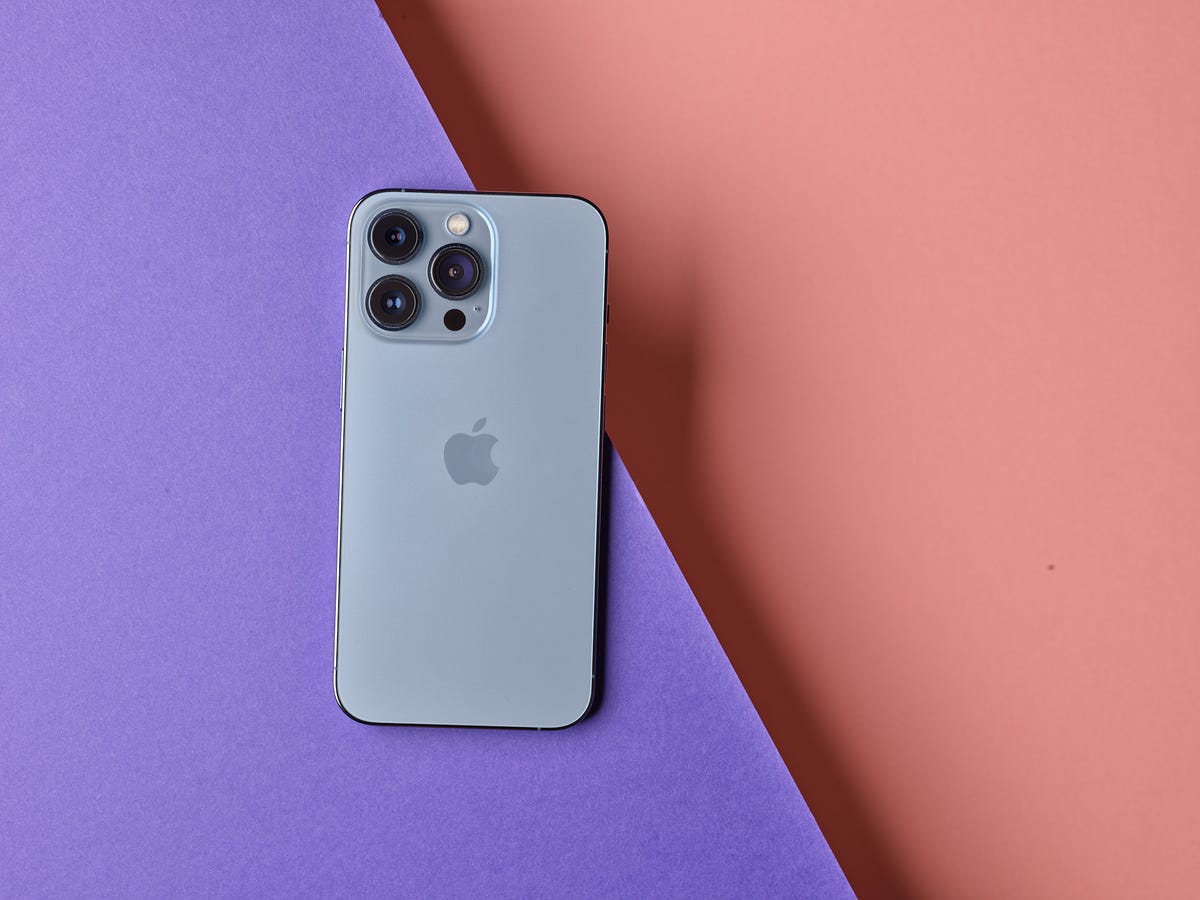
The iPhone 13 Pro is only 2 years old, which means it’s probably still running smoothly and battery life is long enough to get you through the day without concern. Since it has a relatively recent camera and processor, photos taken with this phone will look sharp and colorful enough for posting on your Instagram feed, sharing with friends and even printing small copies to hang on your wall.
The iPhone 15 Pro isn’t a necessary upgrade for iPhone 13 Pro owners, but there are plenty of new features for those who do decide to make the jump. You’ll be able to charge the iPhone 15 Pro with the same cable you probably use for other non-Apple products since it has USB-C. The camera has a higher-resolution sensor, which means you can capture more detail at 48-megapixels or 24-megapixels compared to the 12-megapixel sensor on the iPhone 13 Pro. And then of course, there’s the new titanium design and Action button.
But keep in mind you’re also getting everything that came with last year’s iPhone 14 Pro, such as the Dynamic Island and always-on display. Taken together, these changes along with the Action button could make it easier to multitask without jumping between apps. You’ll also get car crash detection and the option to contact emergency services via satellite if you’re in a remote area, since both features arrived on last year’s iPhone 14 Pro.
The bottom line: The iPhone 15 Pro isn’t an upgrade that you need, but it might be one that you want coming from an iPhone 13 Pro. Apple’s 2-year-old iPhone still has a lot going for it, so don’t upgrade yet if you’re still happy with it. But if you do splurge on the iPhone 15 Pro, it’ll feel like more than just a refreshed version of your current phone. Be sure to see if you’re eligible for a trade-in discount.
iPhone 15 Pro vs. iPhone 12 Pro
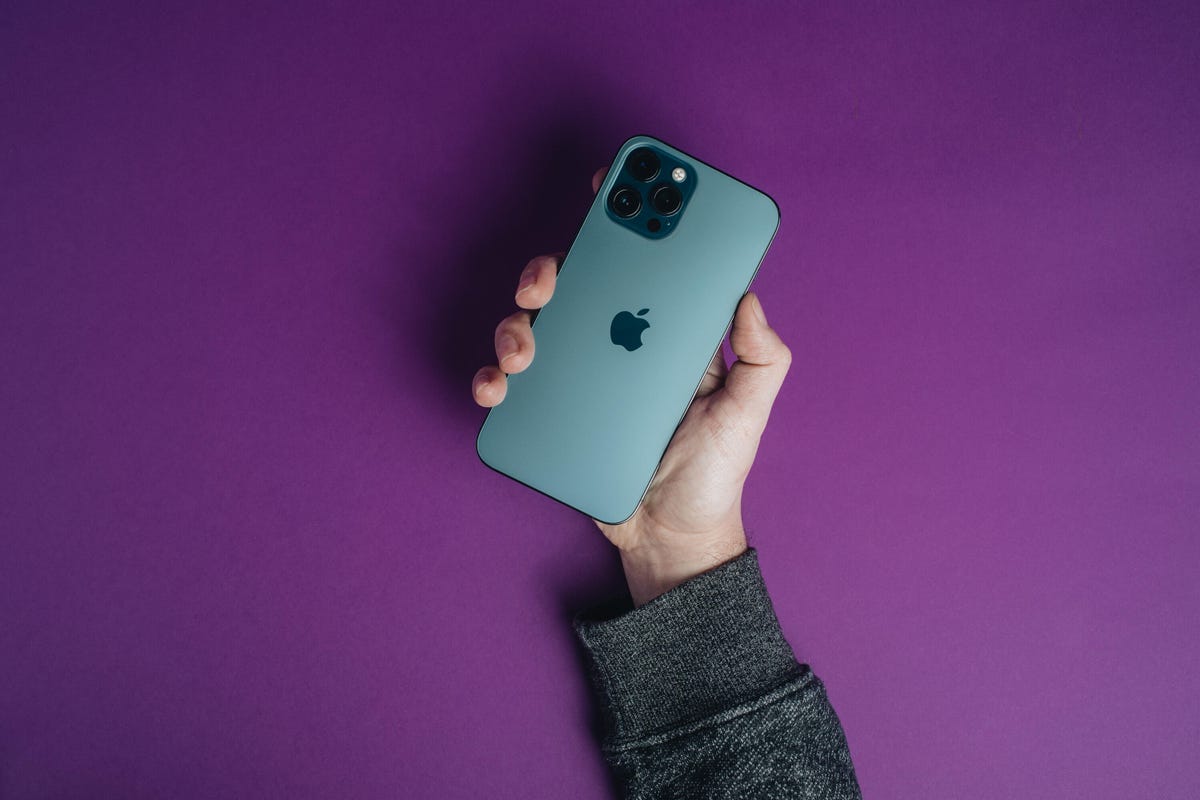
The iPhone 12 Pro is very similar to the iPhone 13 Pro, so the same general advice applies. However, there’s a stronger case for upgrading since the iPhone 12 Pro’s processor is older, meaning it might be starting to slow down.
Battery life will also likely see a dramatic boost considering the iPhone 12 Pro is now 3 years old. One of the iPhone 13 Pro’s biggest changes was longer battery life, and Apple has made further improvements since then. Compared to the iPhone 12 Pro’s estimated 17 hours of video playback, the iPhone 15 Pro is said to get 23 hours.
The display is brighter on Apple’s new phone, meaning it’ll likely be easier to see outside in bright sunlight. The iPhone 12 Pro also lacks ProMotion, which is Apple’s branding for displays that can boost their refresh rate, which should make scrolling feel smoother on the iPhone 15 Pro.
Apple has also thrown in some new photography features between generations, such as macro mode and Photographic Styles, which lets you customize a specific look for how the camera should capture photos. There’s also cinematic mode for capturing footage with a shallow depth of field.
But those are just some of the aspects that separate the iPhone 12 Pro from the iPhone 13 Pro. Don’t forget, you’re also getting everything else Apple has added over the years, from the Action button to the Dynamic Island, a lighter titanium build, car crash detection and emergency SOS via satellite.
The bottom line: The iPhone 15 Pro is a worthwhile upgrade coming from the iPhone 12 Pro, but you should really only upgrade if you’re starting to feel performance and battery life slowing down.
iPhone 15 Pro vs. iPhone 11 Pro
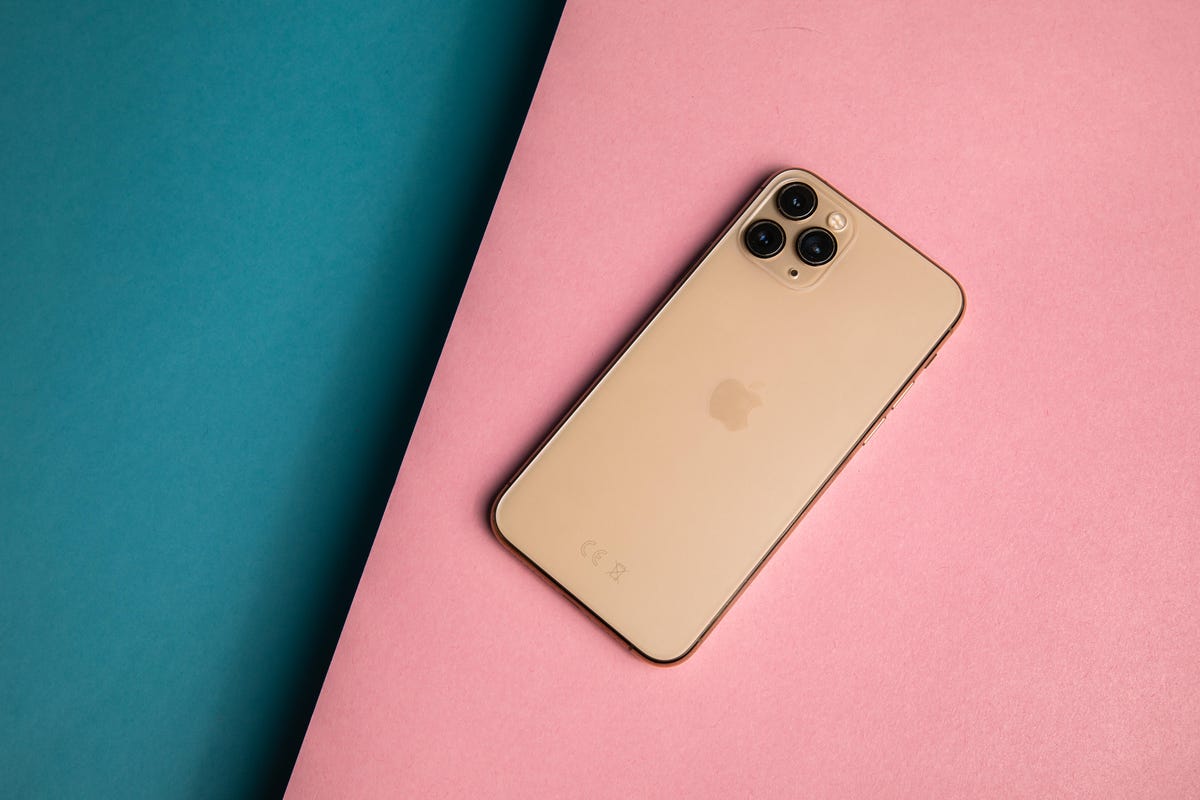
The iPhone 11 Pro is now 4 years old, meaning it’s a good time to upgrade if you’re feeling like your phone isn’t what it used to be. Aside from jumping from a 4-year-old processor to Apple’s brand-new A17 Pro, just about everything else will feel new — from the screen to the camera.
Perhaps most importantly, the iPhone 11 Pro doesn’t support 5G, meaning you may be missing out on faster connection speeds. Apple didn’t add 5G compatibility to its phones until the iPhone 12 launched in 2020.
The iPhone 11 Pro and Pro Max have smaller screens than the iPhone 15 Pro and Pro Max, so you’ll get some extra real estate for watching videos, reading the news and browsing email. The 11 Pro has a 5.8-inch display, while the 11 Pro Max has a 6.5-inch display, compared to the iPhone 15 Pro’s and Pro Max’s respective 6.1-inch and 6.7-inch screens. There’s a lot more that’s new about the iPhone 15 Pro’s screen; size is just the start. You’ll also gain the Dynamic Island, ProMotion, always-on mode and increased brightness.
Camera quality is another area where you’re bound to see a lot of improvements. Since the iPhone 11 Pro’s camera is four generations old, you’re getting the culmination of all the photo and video improvements Apple has added over the years.
Aside from the new 48-megapixel sensor and aforementioned features like cinematic mode and the ability to turn almost any photo into a portrait, you can also take portraits in night mode and capture night mode images with the front camera. You’ll also get a closer optical zoom (3x on the 15 Pro, 5x on the 15 Pro Max) compared to the iPhone 11 Pro’s 2x zoom. Apple’s image processing pipeline has also improved over the years, so you should see a step up in general image quality too.
The iPhone 11 Pro also lacks a lidar sensor, which isn’t a deal breaker but could be important depending on what you use your phone for. The lidar sensor’s depth-sensing capabilities can help the camera focus faster, improve performance in augmented reality apps and enable accessibility features like People Detection, which can help blind users tell when other people are nearby.
You’ll also be able to use MagSafe accessories, like cases and wireless chargers that snap more easily to the back of your phone, with the iPhone 15 Pro or Pro Max. And don’t forget about all the other features Apple has introduced in the last two years, such as the Action button, satellite connectivity for emergencies and car crash detection.
The bottom line: If you have an iPhone 11 Pro, it’s definitely worth upgrading. From 5G to a brand-new processor, larger screen, multitasking features like the Action button and Dynamic Island, and a superior camera, everything about this phone will feel new. If you bought the cheapest version of the iPhone 11 Pro at launch, you’re also probably struggling to store photos and videos since the entry-level model only came with 64GB of storage compared to the 128GB found on newer iPhones.
iPhone 15 Pro vs. iPhone XS

The iPhone has come a long way in the last five years, and that shows when comparing the 2018-era iPhone XS to the iPhone 15 Pro. The iPhone XS lacks a couple of features that are considered standard in many of today’s phones, namely 5G support and an ultrawide camera for taking broader shots.
By upgrading to the iPhone 15 Pro, you’ll gain all of the features mentioned above in our comparison with the iPhone 11 Pro. That includes 5G support, a much sharper camera, more camera modes, MagSafe compatibility, a depth-sensing lidar sensor, and a larger and brighter screen (5.8 inches versus 6.1 inches for the regular Pro, 6.5 inches versus 6.7 inches for the Pro Max).
But Apple added a handful of new capabilities starting with the iPhone 11 that the iPhone XS family also lacks, making an even stronger case for upgrading. The most notable is night mode for the camera, which means you’ll barely have to use your camera’s flash when taking photos in dark environments. There’s also the previously mentioned ultrawide camera, a sharper front-facing camera (7 megapixels versus 12 megapixels) and the ultra wideband chip.
This, of course, just scratches the surface, considering there’s a lot more that’s new in the iPhone 15 Pro, from significantly longer battery life to the Dynamic Island and the 48-megapixel camera.
The bottom line: If you have an iPhone XS or XS Max, it’s time to upgrade. Apple’s 5-year-old phone lacks staple features like 5G, and performance and battery life will likely start to dwindle soon if they haven’t already. The iPhone XS is also the last generation to get new iOS version updates, meaning you’ll be missing out on new features come next year.
iPhone 15 Pro vs. older iPhones
| iPhone 15 Pro | iPhone 14 Pro | iPhone 13 Pro | iPhone 12 Pro | iPhone 11 Pro | iPhone XS | |
|---|---|---|---|---|---|---|
| Display size, tech, resolution, refresh rate, brightness | 6.1-inch OLED; 2,556×1,179 pixels; 120Hz adaptive refresh rate | 6.1-inch OLED; 2,556×1,179 pixels; 120Hz adaptive refresh rate | 6.1-inch OLED; 2,778×1,284 pixels; 120Hz adaptive refresh rate | 6.1-inch OLED; 2,532×1,170 pixels | 5.8-inch OLED; 2,436×1,125 pixels | 5.8-inch OLED; 2,436×1,125 pixels |
| Pixel density | 460 ppi | 460 ppi | 458 ppi | 460 ppi | 458 ppi | 458 ppi |
| Dimensions (inches) | 5.77 x 2.78 x 0.32 in | 5.81 x 2.81 x 0.31 in. | 6.33 x 3.07 x 0.3 in | 5.78 x 2.82 x 0.29 in | 5.67×2.81×0.32 in | 5.7×2.8×0.3 in |
| Dimensions (millimeters) | 70.6 x 146.6 x 8.25 mm | 147.5 x 71.5 x 7.85mm | 161 x 78 x 7.65 mm | 146.7 x 71.5 x 7.4 mm | 144×71.4×8.1 mm | 143.6×70.9×7.7 mm |
| Weight (grams, ounces) | 187 g (6.6 oz) | 206 g (7.27 oz) | 240 g (8.48 oz) | 189 g (6.66 oz) | 188 g (6.63 oz) | 177 g (6.2 oz) |
| Mobile software (at launch) | iOS 17 | iOS 16 | iOS 15 | iOS 14 | iOS 13 | iOS 12 |
| Camera | 48-megapixel (wide), 12-megapixel (ultrawide), 12-megapixel telephoto | 48-megapixel (wide), 12-megapixel(ultrawide), 12-megapixel(telephoto) | 12-megapixel (wide), 12-megapixel (ultrawide), 12-megapixel (telephoto) | 12-megapixel (wide), 12-megapixel (ultra-wide), 12-megapixel (telephoto) | 12-megapixel (wide), 12-megapixel (ultra-wide), 12-megapixel (telephoto) | Dual 12-megapixel (wide and telephoto) |
| Front-facing camera | 12-megapixel | 12-megapixel | 12-megapixel | 12-megapixel | 12-megapixel | 7-megapixel |
| Video capture | 4K | 4K | 4K | 4K | 4K | 4K |
| Processor | Apple A17 Pro | Apple A16 Bionic | Apple A15 Bionic | Apple A14 Bionic | Apple A13 Bionic | Apple A12 Bionic |
| Storage | 128GB, 256GB, 512GB, 1TB | 128GB, 256GB, 512GB, 1TB | 128GB, 256GB, 512GB, 1TB | 128GB, 256GB, 512GB | 64GB, 256GB, 512GB | 64GB, 256GB, 512GB |
| Expandable storage | None | None | None | None | None | None |
| Battery | Undisclosed; Apple claims up to 23 hours of video playback | Undisclosed; Apple claims 23 hours of video playback | Undisclosed; Apple claims 22 hours of video playback | Undisclosed; Apple claims 17 hours of video playback | Undisclosed, Apple claims 18 hours of video playback | Undisclosed, Apple claims 14 hours of video playback |
| Fingerprint sensor | None (Face ID) | None (Face ID) | None (Face ID) | None (FaceID) | None (Face ID) | None (Face ID) |
| Connector | USB-C (USB 3.0) | Lightning | Lightning | Lightning | Lightning | Lightning |
| Headphone jack | No | No | No | No | No | No |
| Special features | 5G; Action button; always-on display; water resistant; MagSafe; Dynamic Island; 5x optical zoom on Max (120mm equivalent); satellite connectivity; crash detection;eSIM; Thread networking technology; 2nd-gen ultrawideband; lidar | Dynamic Island; always-on display; 5G; satellite connectivity; crash detection; MagSafe; water resistant; e-SIM; ultra wideband; lidar | 5G; MagSafe; water resistant; physical and e-SIM; ultra wideband; lidar | 5G; MagSafe; water resistant; physical and e-SIM; ultra wideband; lidar | Water resistant; physical and e-SIM; ultra wideband | Water-resistant; physical and e-SIM |
Technologies
Today’s NYT Strands Hints, Answers and Help for Nov. 28 #635
Here are hints and answers for the NYT Strands puzzle for Nov. 28, No. 635.
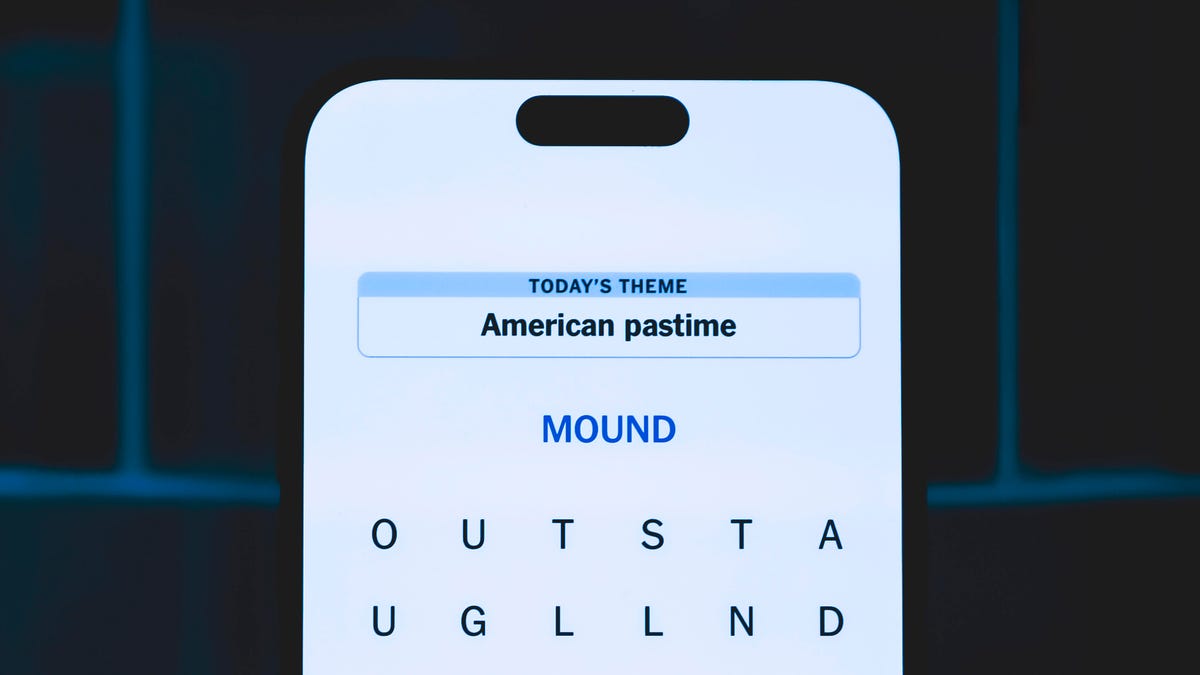
Looking for the most recent Strands answer? Click here for our daily Strands hints, as well as our daily answers and hints for The New York Times Mini Crossword, Wordle, Connections and Connections: Sports Edition puzzles.
Today’s NYT Strands puzzle is pretty tricky. If you’re not familiar with certain superstitious beliefs, you might not find all the answers. And some of the answers are difficult to unscramble, so if you need hints and answers, read on.
I go into depth about the rules for Strands in this story.
If you’re looking for today’s Wordle, Connections and Mini Crossword answers, you can visit CNET’s NYT puzzle hints page.
Read more: NYT Connections Turns 1: These Are the 5 Toughest Puzzles So Far
Hint for today’s Strands puzzle
Today’s Strands theme is: If all else fails…
If that doesn’t help you, here’s a clue: Don’t tell, it won’t come true.
Clue words to unlock in-game hints
Your goal is to find hidden words that fit the puzzle’s theme. If you’re stuck, find any words you can. Every time you find three words of four letters or more, Strands will reveal one of the theme words. These are the words I used to get those hints but any words of four or more letters that you find will work:
- GLUB, RATS, TARN, DALE, FONT, FOUNT, LASH
Answers for today’s Strands puzzle
These are the answers that tie into the theme. The goal of the puzzle is to find them all, including the spangram, a theme word that reaches from one side of the puzzle to the other. When you have all of them (I originally thought there were always eight but learned that the number can vary), every letter on the board will be used. Here are the nonspangram answers:
- DANDELION, STAR, COIN, FOUNTAIN, LADYBUG, EYELASH
Today’s Strands spangram
Today’s Strands spangram is MAKEAWISH. To find it, start with the M that’s three letters down on the far right, and wind backwards.
Technologies
Today’s NYT Connections Hints, Answers and Help for Nov. 28, #901
Here are some hints and the answers for the NYT Connections puzzle for Nov. 28, #901.
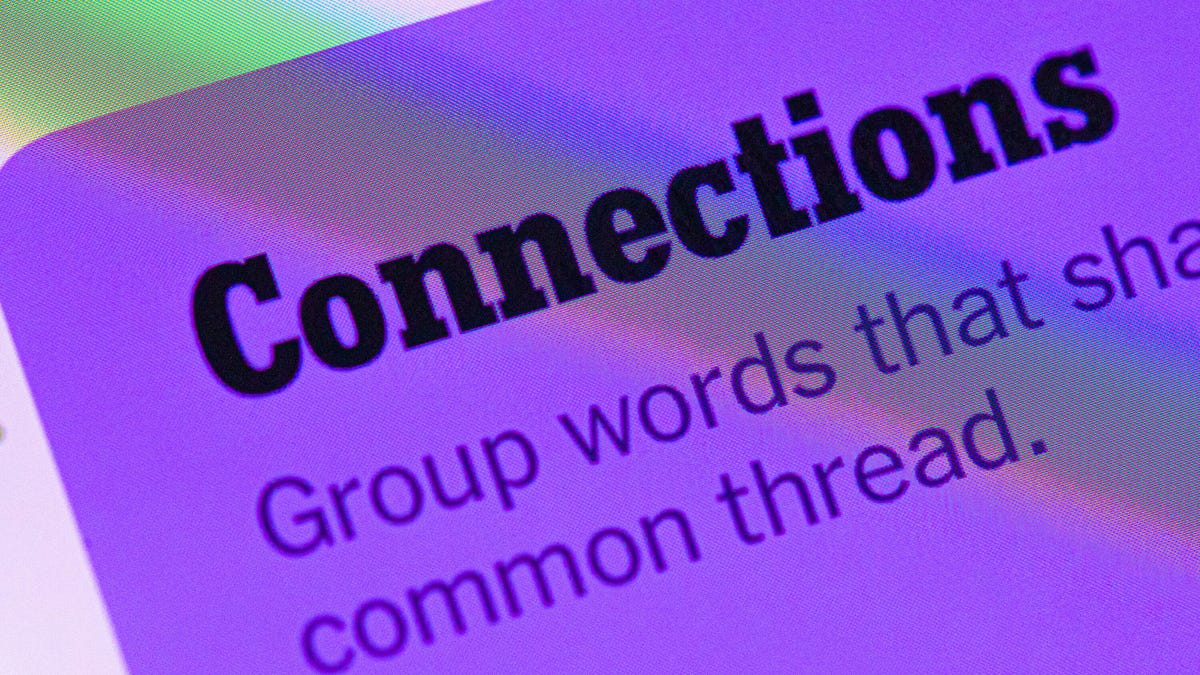
Looking for the most recent Connections answers? Click here for today’s Connections hints, as well as our daily answers and hints for The New York Times Mini Crossword, Wordle, Connections: Sports Edition and Strands puzzles.
Today’s NYT Connections puzzle is kind of tough. If you need help sorting the answers into groups, you’re in the right place. Read on for clues and today’s Connections answers.
The Times now has a Connections Bot, like the one for Wordle. Go there after you play to receive a numeric score and to have the program analyze your answers. Players who are registered with the Times Games section can now nerd out by following their progress, including the number of puzzles completed, win rate, number of times they nabbed a perfect score and their win streak.
Read more: Hints, Tips and Strategies to Help You Win at NYT Connections Every Time
Hints for today’s Connections groups
Here are four hints for the groupings in today’s Connections puzzle, ranked from the easiest yellow group to the tough (and sometimes bizarre) purple group.
Yellow group hint: Appropriate.
Green group hint: I win!
Blue group hint: Musical instrument.
Purple group hint: Time to talk.
Answers for today’s Connections groups
Yellow group: Fitting.
Green group: Achieve victory over.
Blue group: Parts of an electric guitar.
Purple group: Phonetic elements of speech.
Read more: Wordle Cheat Sheet: Here Are the Most Popular Letters Used in English Words
What are today’s Connections answers?
The yellow words in today’s Connections
The theme is fitting. The four answers are fair, just, proper and right.
The green words in today’s Connections
The theme is achieve victory over. The four answers are beat, best, take and worst.
The blue words in today’s Connections
The theme is parts of an electric guitar. The four answers are fret, peg, pickup and string.
The purple words in today’s Connections
The theme is phonetic elements of speech. The four answers are intonation, loudness, rhythm and stress.
Technologies
Anker’s New MagSafe Car Mount Keeps Your Phone Cool While Charging, and It’s 30% Off for Black Friday
Get wired-like charging speeds and MagSafe compatibility with Anker’s wireless car charging bundle for $62.99.
Black Friday is the best time of the year to upgrade the little essentials that make your everyday tech life more pleasant. I’ve found the perfect deal to amp up the phone charging setup in your car. This Anker MagSafe wireless car charging bundle is 30% off for the holidays, and it gives your iPhone a fast and steady way to power up while you navigate. It delivers up to 25-watt wireless charging speeds and with onboard active cooling, your phone stays comfortable to the touch.
Get it now for $62.99 verses the list price of $89.99.
What sets this charger apart is that its performance and cooling tech is built into a surprisingly compact package. The stand uses an ultra-strong Qi2 magnetic lock to keep your phone secure through bumps and turns. You can even tilt the mount and switch between portrait and landscape modes for navigation without blocking the view. The bundle has everything you need to get started including a 60-watt dual-USB-C charger, an adequately long USB-C cable, and cable organizers for a clean setup. Anker also includes a two-year warranty for peace of mind.
If you are getting your car prepped up for driving to a holiday vacation or just need a faster charging mount for your daily commute, this deal makes a lot of sense. CNET’s experts are also tracking more Black Friday and Cyber Monday picks across Apple products, headphones, and more, so you can score more savings before the sales season wraps up.
MOBILE DEALS OF THE WEEK
-
$749 (save $250)
-
$475 (save $175)
-
$499 (save $300)
-
$900 (save $400)
Why this deal matters
A high quality charger is a great addition to any car to speedily top up your phone on the go. You will especially want to look out for options from a top-tier brand like Anker for its fast charging speeds and reliability. This Black Friday deal is an excellent opportunity to save big on a staple car accessory. With holiday shopping heating up and tech accessories being one of the most popular categories, we expect the deal to sell out quick. So don’t wait too long before jumping on it.
Don’t miss any of our unbiased tech content and lab-based reviews. Add CNET as a preferred Google source.
Join Our Daily Deals Text Group!
Get hand-picked deals from CNET shopping experts straight to your phone.
By signing up, you confirm you are 16+ and agree to receive recurring marketing messages at the phone number provided. Consent is not a condition of purchase. Reply STOP to unsubscribe. Msg & data rates may apply. View our Privacy Policy and Terms of Use.
-

 Technologies3 года ago
Technologies3 года agoTech Companies Need to Be Held Accountable for Security, Experts Say
-

 Technologies3 года ago
Technologies3 года agoBest Handheld Game Console in 2023
-

 Technologies3 года ago
Technologies3 года agoTighten Up Your VR Game With the Best Head Straps for Quest 2
-

 Technologies4 года ago
Technologies4 года agoBlack Friday 2021: The best deals on TVs, headphones, kitchenware, and more
-

 Technologies4 года ago
Technologies4 года agoVerum, Wickr and Threema: next generation secured messengers
-

 Technologies4 года ago
Technologies4 года agoGoogle to require vaccinations as Silicon Valley rethinks return-to-office policies
-

 Technologies4 года ago
Technologies4 года agoOlivia Harlan Dekker for Verum Messenger
-

 Technologies4 года ago
Technologies4 года agoiPhone 13 event: How to watch Apple’s big announcement tomorrow
